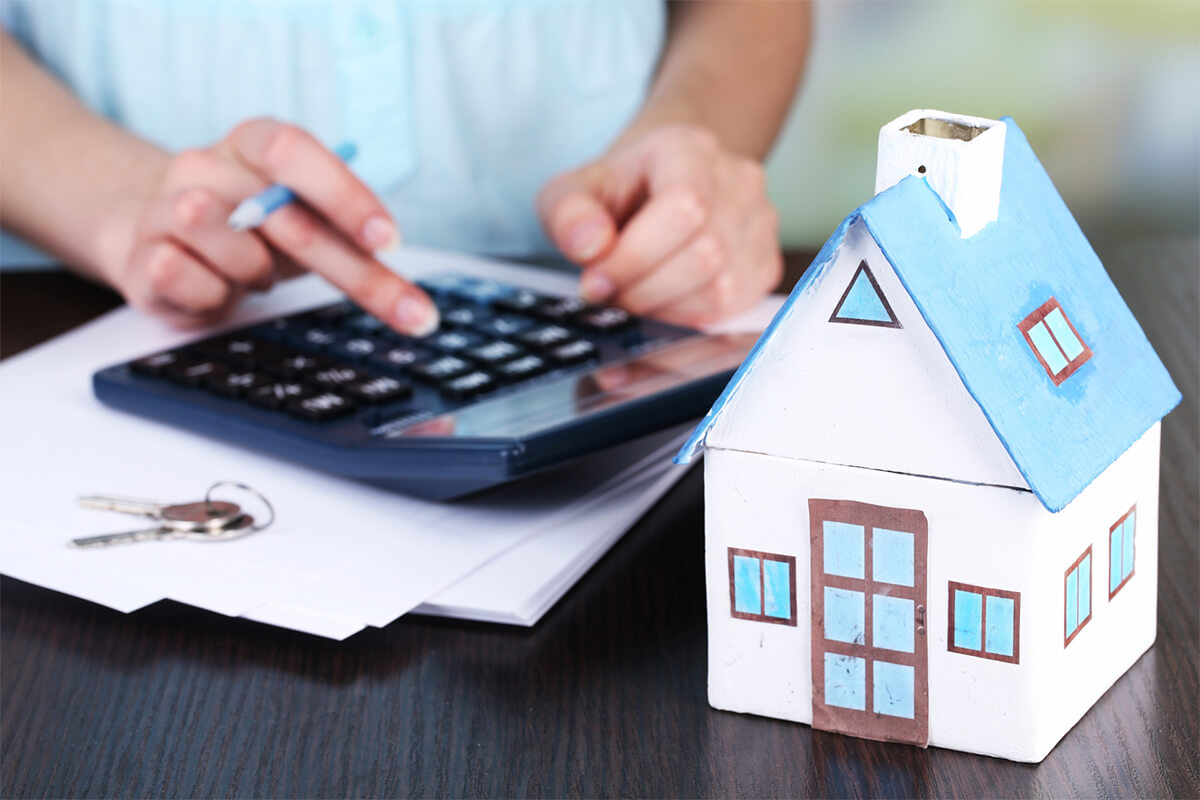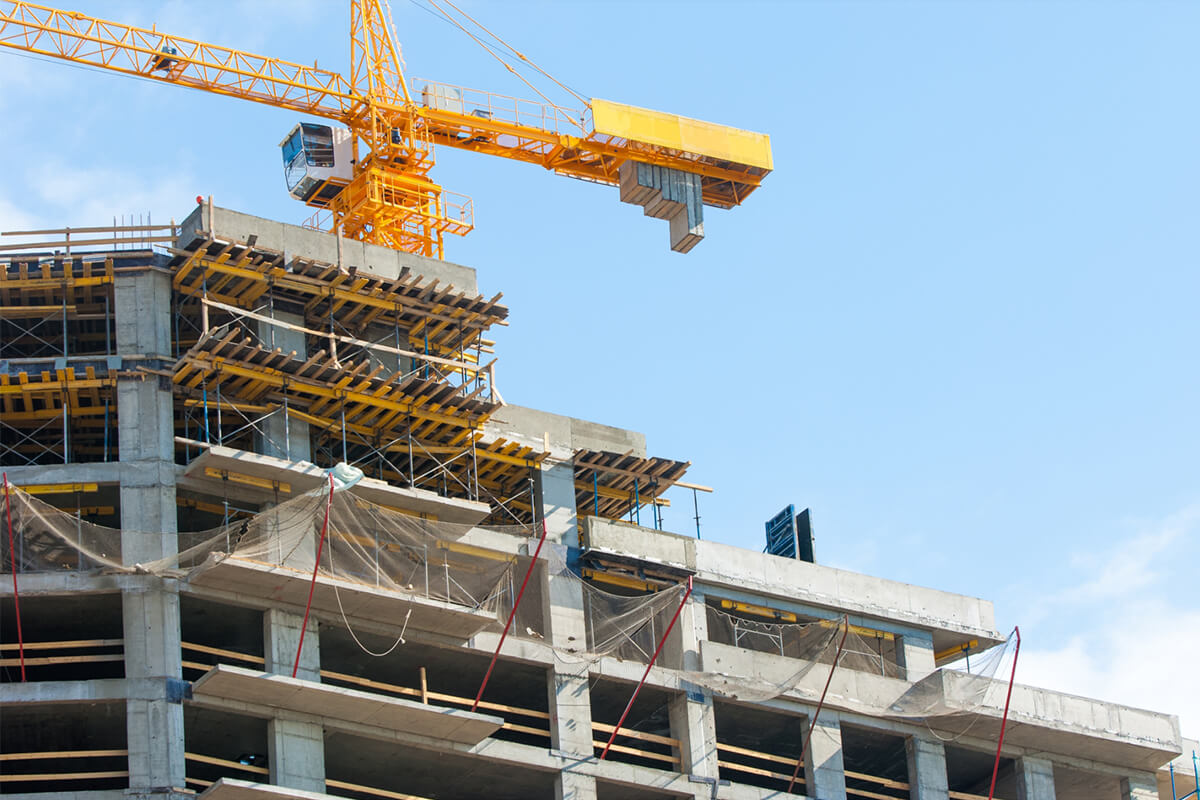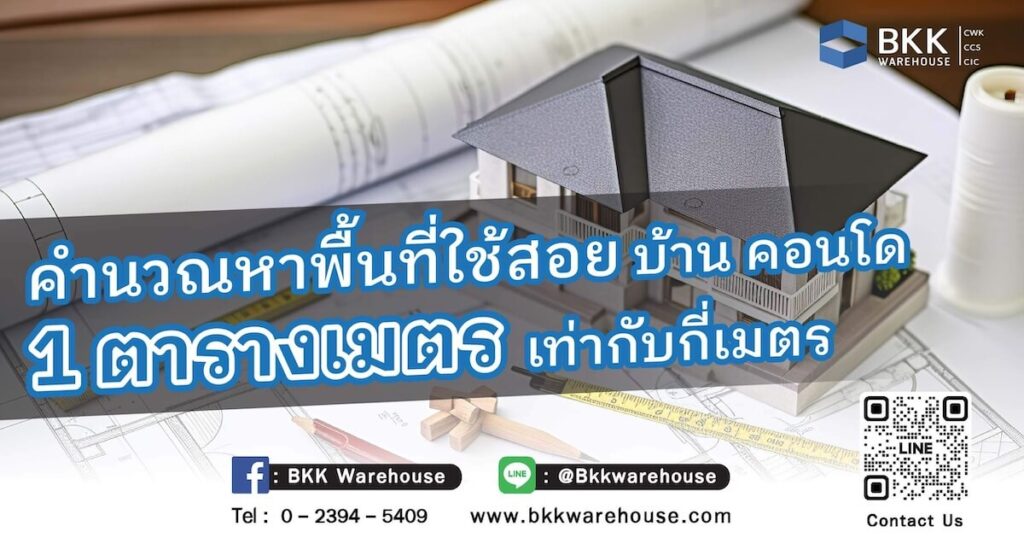How many meters are in a square meter? Or, as some might ask, how many square meters are in a meter? Many people are confused about this when calculating the area of a house or condo. This is an important factor that affects decisions when investing in real estate, whether buying a home or investing in property. Area calculation is easy if you know how to use basic formulas to calculate square meters and square wah (a Thai unit of area). This will help you better understand the size and cost of the property you’re interested in.
Furthermore, it allows you to determine your budget. Once you’ve calculated the area, you’ll know the total costs associated with the property before deciding to finance a house or condo, and whether you can comfortably afford the installments. It’s crucial to carefully consider this. This article will provide information to those who are unsure about how to correctly calculate the usable area of houses and condos. Let’s read along together.
Table of Contents
1. Why do area units and calculations matter?
2. How many types of units are used to measure area?
3. Measuring and calculating usable area with a calculator
5. Area-Based Pricing in Housing Projects
6. The method of calculating house prices
7. Common Area Fees: Don’t Forget to Calculate!
8. Calculating common fees from land area of horizontal houses
9. How are condo common fees calculated from unit area?
Why do area units and calculations matter?

Units of measurement and the calculation of usable area are extremely important in real estate, for planning and design. Whether it’s constructing buildings, houses, or condos, these aspects are under the regulation and oversight of the Department of Public Works and Town & Country Planning, as well as other fields. Knowing units of measurement and how to calculate area is essential to achieve accurate results that are suitable for practical use. Providing information about the usable area of residences, such as houses or condos, is often a key factor for potential buyers. Typically, residential developments will provide usable area information in various forms, such as total usable area, internal usable area, and common areas, to help buyers make informed decisions.
Understanding how to calculate area is beneficial when you want to verify or compare the usable area information of a property. Simply knowing how to relate square meters to meters (and understanding the difference between area and length) allows you to easily assess or verify the usable area of a house or condo you’re interested in. You can then compare this to the information provided by the developer to see if they match, which helps in your decision-making process before signing a purchase agreement.
Knowing how to calculate area will give you more confidence in your decision to buy a property. This comes from the ability to compare and more easily choose a property that suits your needs.
How many types of units are used to measure area?
The standard units of measurement used to calculate the usable area of houses or condos are primarily two: Tarnag Wah (sq. wa.) and square meters (sq. m.). These two units are used in different contexts.

- Square Wa (sq. wa): Commonly used to assess the area of land, and sometimes for larger residential areas, such as large plots of land or land development projects.
- Square Meter (sq. m): The standard unit for measuring total area, commonly used for assessing and measuring the area of houses or condominiums.
- Rai, Ngan: Typically used to measure and assess the price of large land areas, such as land with an area of 1 rai, or a project’s total area of 20 rai. These units are not used to measure the area of typical houses.
Converting between square wa and square meters can be done by converting both to the same unit, as follows:
- 1 Square Wa = 4 Square Meters
- 1 Rai = 4 Ngan = 400 Square Wa
When converting area from square wa to square meters:
Formula:
Area (sq. wa) × 4 = Result: Area (sq. m)
Example of Usable Area Calculation:
A ready-to-move-in detached house in Project A has a land area of 70 square wa. The land area in square meters is calculated as: 70 x 4 = 280 square meters. If the ready-to-move-in detached house in Project A is a two-story house, it can be estimated that the total usable area of this house is approximately 560 square meters.
Important Note: This calculation method provides only an approximate total usable area of the house. Because the second floor of the house may have less usable area than the first floor, the actual total area of the house may be less than 560 square meters.
Measuring and calculating usable area with a calculator
Once you understand the different units used in area calculations, a builder’s tool like a tape measure (“ตลับเมตร”) is the easiest and most readily available tool for measuring usable space. Then, a calculator can be used to quickly and accurately determine the area of a house or condo. This follows standard international calculation practices. With just these two tools, calculating usable area is no longer difficult, and anyone can do it themselves.

Calculating the usable area inside a house or condo can be done using a simple method, as follows:
Formula for Calculation:
Width of the room (m) × Length of the room (m) = Total area (sq. m)
Example Calculation of Usable Area in a House:
Mr. A’s bedroom has a width of 6 meters.
Mr. A’s bedroom has a length of 4 meters.
Multiply the measured values of width and length for Mr. A’s bedroom: 6 m × 4 m = 24 sq. m.
Therefore, the total usable area of Mr. A’s bedroom is 24 sq. m.
How to measure land area
- Measure the width and length of the area (in meters) for which you want to calculate the total area (in square meters).
- Multiply the width and length measurements (in meters) to find the total area in square meters.
- After obtaining the total area in square meters, you can also convert the result into square wah (ตารางวา).

Area Calculation Formula and Examples
Formula:
Width (m) × Length (m) = Total Area (sq. m)
Example: Calculating Land Area
- Measure the width of the land: 20 m
- Measure the length of the land: 10 m
- Multiply the width and length: 20 m × 10 m = 200 sq. m
- Result: The land has a total area of 200 square meters.
Converting Square Meters to Square Wah (Thai unit)
Formula:
Total Area (sq. m) × 0.25 = Total Area (sq. wah)
Alternative Method: You can also divide by 4 instead of multiplying by 0.25 to convert from square meters to square wah.
Example: Converting Land Area
- Take the total area (200 sq. m) and multiply by 0.25: 200 sq. m × 0.25 = 50 sq. wah
- Result: The land has a total area of 50 square wah.
Important Note for Larger Land Plots:
For large land plots, using a measuring tape may be impractical or difficult. In reality, land parcels are rarely perfect squares or rectangles. Therefore, the best approach is to use a professional land surveyor or expert. They have the expertise and specialized equipment for accurate and automated area measurement and calculation. Using professional services ensures precise and reliable results.
Area-Based Pricing in Housing Projects
Most housing developments price their homes as a total package, including the cost of the land, construction, and other expenses related to building the house. This method is simple and convenient for buyers, allowing them to quickly compare the prices of different houses without having to calculate the price per square meter or square wah (ตารางวา) themselves.

The method of calculating house prices
Mr. A is interested in a two-story detached house with a land area of 50 square wah and a usable area of 165 square meters, priced at 3.5 million baht. It’s very rare for the price to be stated per square meter or per square wah, unless buying allocated land and building a house independently. In that case, the developer will typically offer the price per square wah.

Example Calculation Steps:
Calculating the selling price per unit area of land:
Formula Used:
Single-family home price ÷ Total land area (square wah) = Price per square wah (Baht/sq wah)
Example:
House Price: 3,500,000 Baht ÷ Land Area: 50 sq wah = 70,000 Baht/sq wah
Therefore, the result is: For a single-family home priced at 3,500,000 Baht with a total land area of 50 square wah, the selling price would be 70,000 Baht per square wah.
Alternatively: A single family home lot priced at 70,000 Baht/sq wah with total area of 50 sq wah equals a house price of 3,500,000 Baht.
This calculation is very useful. It provides you with information to make a home-buying decision and clearly compare it with the prices of houses in other developments or similar houses in the same area.
Common Area Fees: Don’t Forget to Calculate!
Common area fees are an important factor to consider when calculating the affordability of buying a home. Both landed properties and high-rise properties have different common area fees.

Calculating common fees from land area of horizontal houses
Example of how to calculate:
- The common area maintenance fee is 30 Baht per square wah per month.
- Suppose the house we bought has a total land area of 80 square wah.

Formula used for calculation:
Total land area (sq. wah) × Common area fee/sq. wah = Common area fee (Baht/month)
Example:
Total land area: 80 sq. wah × 30 Baht/sq. wah = 2,400 Baht/month
Therefore, the result for the common area fee for this single-family house that the homeowner must pay per month is 2,400 Baht.
How are condo common fees calculated from unit area?
Example Calculation Procedure:
- Common Area Fee: 60 Baht / square meter / month
- Suppose the condo unit you purchased has a total usable area of 50 square meters.
Formula for Calculation:
Usable area of the unit (sq.m.) × Common area fee per sq.m. = Common area fee (Baht/month)
Calculation:
Total usable area of the condo unit: 50 sq.m. x 60 Baht/sq.m. = 3,000 Baht/month
Therefore, the resulting monthly common area fee that the unit owner must pay is 3,000 Baht.

Calculating common area fees (or maintenance fees) is a crucial factor to consider when deciding to buy a condominium. These fees are a recurring monthly expense that you’ll be responsible for, in addition to your mortgage payments. Calculating these fees will give you a complete picture of your monthly obligations, allowing you to make a more informed decision about whether the condo’s price is truly affordable for you.”
In summary, as we’ve now established, you can’t directly convert square meters to meters. Understanding and calculating area is essential when buying property, whether it’s a house or a condominium. Usable space is a key factor that influences price, and helps you determine whether a property meets your needs and budget. Accurate area calculations enable you to compare different properties effectively.
We hope this article has been helpful in providing you with information for making informed decisions about buying a home or investing in real estate. This knowledge can empower you to avoid being taken advantage of by real estate agents or developers, giving you more confidence in your investment.


Recommended articles
What is inventory? Understanding inventory in business operations.
Read the contentMar
What is a distribution center? A key component of modern logistics.
Read the contentMar
What’s a warehouse? Why it matters. Types & Functions explained.
Read the contentFeb
What is purple zone land? Ideal uses and information. Check here!
Read the contentFeb
Land survey fees. Costs, steps, docs. Must-know before land deals.
Read the contentJan
GMP. What is it? Importance, users, and a simple business guide.
Read the contentNov